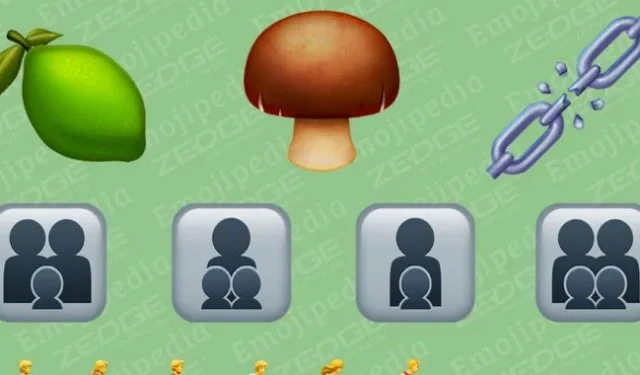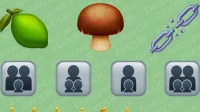The Unicode Consortium has finalized version 15.1 of the Unicode standard this week. Although Unicode is used to display tens of thousands of characters in languages used worldwide, the headlining change to any new version is usually about new emoji additions.
As implied by the version number, version 15.1 is a minor update to last year’s 15.0 release that makes no changes to the core specification. Nevertheless, the update adds six new emoji, plus 108 new variations on people emoji (the short version: all emoji depicting someone moving rightward can now be flipped to show them moving leftward).
The new designs, as summed up by the emoji experts at Emojipedia, include shaking and nodding heads, a phoenix, a lime, an “edible mushroom,”and a broken chain. Family emoji have also been updated to include options for gender-neutral parents and children.
If you’re interested in the nuts and bolts of how emoji work, the interesting thing about these emoji designs (including the new ones) is that they’re all technically modifications of existing emoji. Two or more emoji joined together with a special character called a “zero-width joiner”(ZWJ) are displayed as a single modified emoji instead. ZWJ sequences are mainly used to handle different skin and hair colors and genders in people emoji, but here they’re being used to create all-new emoji from existing designs.
The shaking and nodding heads are made of the standard smiling face emoji plus horizontal and vertical arrow emoji. The Phoenix is a regular bird emoji joined with the fire emoji. The lime is just a lemon joined to the color green, and the edible mushroom is the current spotted mushroom emoji joined to the color brown. The broken chain is just a regular chain joined with the “collision“emoji.
The Unicode update also adds “622 new CJK [Chinese, Japanese, and Korean] characters,”which “have been deemed to be very urgently needed for use in China.”The Unicode Consortium says that these characters are primarily intended “for use in public service databases.”
Per usual, the Unicode Consortium’s release of a new version is just the first step toward new emoji that show up on all of our phones, tablets, and computers. Apple, Microsoft, Google, and other companies need to release operating system updates incorporating the new designs. If you see little � symbols in messages following the release of new emoji, it’s usually because they represent characters that your device doesn’t know how to display.
Unicode 15.1 now supports 149,813 unique characters. Of those, 3,782 are emoji.


